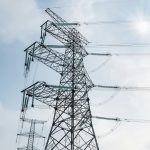In the world of automotive performance, throttle response is a crucial aspect that can significantly impact a car’s overall performance and driving experience. Throttle response is the measure of how quickly an engine can increase its power output in response to a driver’s command for acceleration. Strong and efficient throttle response is especially vital in naturally aspirated engines, which rely solely on atmospheric pressure for air intake, as opposed to turbocharged or supercharged engines. Therefore, enhancing the throttle response of a naturally aspirated engine is beneficial in providing a superior driving experience.
For those of you who are enthusiastic about optimising your vehicle’s performance, you can explore various techniques to enhance the throttle response of a naturally aspirated engine in the UK. This article is a comprehensive guide that will walk you through these techniques.
Additional reading : How can you modify a car’s audio system for optimal sound quality without draining the battery in the UK?
Air Flow Improvement
An efficient way to enhance throttle response is by improving the airflow of the engine. The principle behind this is simple: the more air an engine can draw in, the more fuel it can burn, and the more power it can generate. However, the process of improving the air flow in an engine is a bit more complex.
One simple method is to install a high-flow air filter. These filters have less restriction compared to standard filters, allowing more air to flow into the engine. With more air, the engine can burn fuel more effectively, improving throttle response.
Additional reading : What advanced driving techniques can help avoid accidents in high-traffic UK zones?
Upgrading the intake manifold also contributes to improved air flow. A larger intake manifold has wider passages, enabling more air to flow into the engine. This improves the engine’s breathing capacity, resulting in a better throttle response.
Fuel Delivery Enhancement
Enhancing the fuel delivery system is another technique that can significantly improve the throttle response of a naturally aspirated engine. When the throttle valve opens, it’s essential that the right amount of fuel is delivered instantly and efficiently, to mix with air for combustion.
Fuel injectors play a vital role in delivering the fuel. Upgrading to performance fuel injectors ensures that the right amount of fuel is delivered promptly and accurately when you step on the throttle, enhancing the throttle response.
Moreover, maintaining a clean fuel system by regularly changing the fuel filters and cleaning the fuel injectors can significantly improve throttle response. A clean fuel system ensures that the fuel flow is not obstructed, enabling faster and more efficient fuel delivery.
Ignition Timing Adjustment
The timing of the ignition spark plays a critical role in engine performance. When the spark ignites the air-fuel mixture too early or too late, it can cause a poor throttle response and reduced power output. Therefore, adjusting the ignition timing can help enhance throttle response.
A correctly timed spark ensures that the air-fuel mixture in the combustion chamber ignites at the optimal point. This results in a more complete and efficient burn of the air-fuel mixture, providing better throttle response.
Some vehicles have an adjustable distributor that allows you to manually advance or retard the ignition timing. In other vehicles, you can make adjustments through an engine control unit (ECU) remap. Either way, adjusting the ignition timing requires specialist knowledge and tools, so it’s recommended to get help from a professional mechanic.
Exhaust System Upgrade
The exhaust system is an integral part of an engine’s performance. A restrictive exhaust system can hinder the engine’s ability to expel exhaust gases, affecting throttle response negatively. Upgrading to a performance exhaust system can help improve throttle response in naturally aspirated engines.
Performance exhaust systems, such as cat-back or axle-back systems, have larger diameter pipes and less restrictive mufflers. This allows the engine to expel exhaust gases more efficiently, relieving the engine of back pressure. With less back pressure, the engine can breathe easier, resulting in better throttle response.
Weight Reduction
Finally, reducing the weight of your vehicle can also improve the throttle response. The less weight the engine has to move, the quicker it can respond to the throttle. Weight reduction can be achieved in various ways such as using lightweight materials for body parts, removing unnecessary components, or even switching to lighter wheels.
Remember, improving throttle response involves a combination of these techniques. It’s not just about making one change but evolving the entire performance ecosystem of your vehicle. With these techniques, you can enhance the throttle response of your naturally aspirated engine, ensuring a better, more responsive driving experience.
Turbo Technology Versus Naturally Aspirated Engines
Turbo technology, or forced induction, has been a popular method used by manufacturers to increase the performance of an engine. It works by forcing more air into the combustion chamber, allowing for a more potent air-fuel mixture. This results in greater power output and fuel efficiency. However, one significant drawback of turbo technology is turbo lag. It refers to the delay in power delivery that occurs when the driver steps on the accelerator before the turbocharger reaches its operating speed.
On the other hand, naturally aspirated engines don’t rely on external devices like a turbocharger to force more air into the combustion chamber. Instead, they draw in air at atmospheric pressure. Hence, there’s no turbo lag, and the throttle response is instant and linear, providing a smooth power delivery. However, due to the lack of forced induction, naturally aspirated engines often have lower power output and fuel efficiency.
Enhancing the throttle response in these engines involves optimising the air intake, fuel delivery, ignition timing, exhaust system, and reducing the vehicle’s weight. Each of these techniques can contribute to a more responsive and efficient naturally aspirated engine.
Induction System Enhancement
The induction system is a critical area where improvements can greatly enhance the throttle response of a naturally aspirated engine. The throttle body, a component of the induction system, controls the amount of air that enters the engine. By replacing the standard throttle body with a larger, high-quality one, more air can be drawn into the engine, improving power delivery.
Furthermore, the use of nitrous oxide can also enhance throttle response. Nitrous oxide is a powerful oxidiser that can significantly increase an engine’s power output. When injected into a naturally aspirated engine, it provides a sudden boost in power, improving the throttle response. However, the use of nitrous oxide requires careful management, as it can potentially harm the engine if not used correctly.
Another effective technique is to install a cold air intake system. Such a system draws cooler air from outside the engine bay, which is denser and carries more oxygen. This results in a more potent air-fuel mixture, enhancing the engine’s power output and throttle response.
Conclusion
As we’ve explored throughout this article, there are multiple methods to enhance the throttle response of a naturally aspirated engine in the UK. These techniques involve improving the airflow, enhancing the fuel delivery, adjusting the ignition timing, upgrading the exhaust system, reducing the car’s weight and optimising the induction system.
Remember, each engine will have its own unique requirements, and what works best for one might not necessarily work for another. Therefore, it is advisable to consult with a professional mechanic or engine tuning specialist to determine the optimal strategy for your specific vehicle.
Ultimately, the goal is not only to boost the performance of your vehicle but also to enhance your overall driving experience. By improving the throttle response of your naturally aspirated engine, you can experience quicker acceleration, smoother power delivery, and a more responsive, engaging drive.











